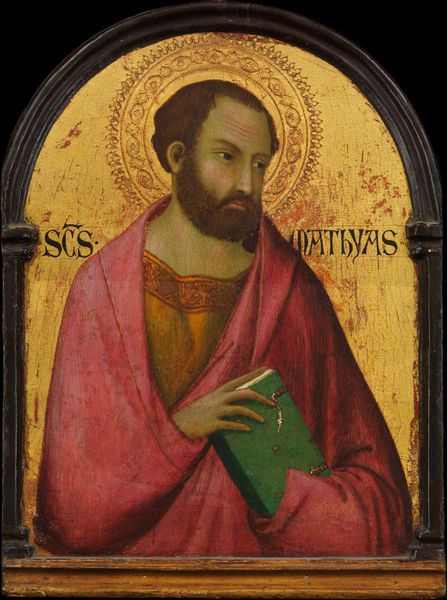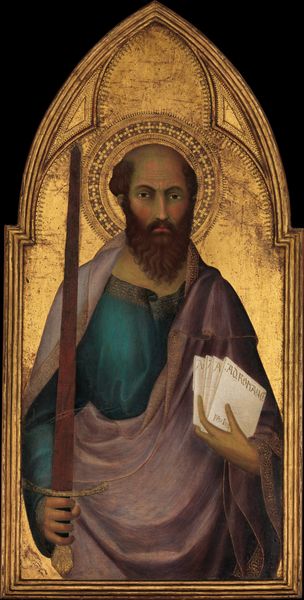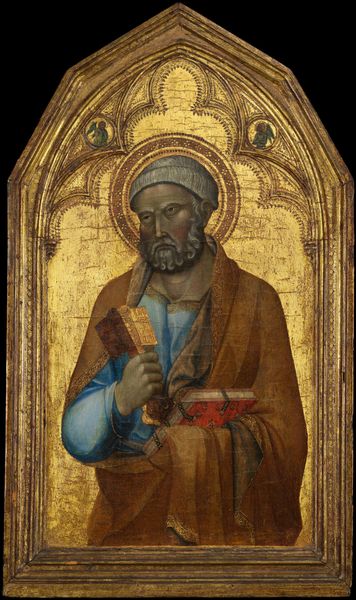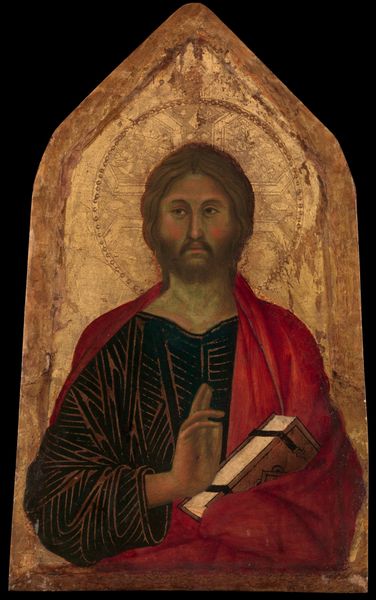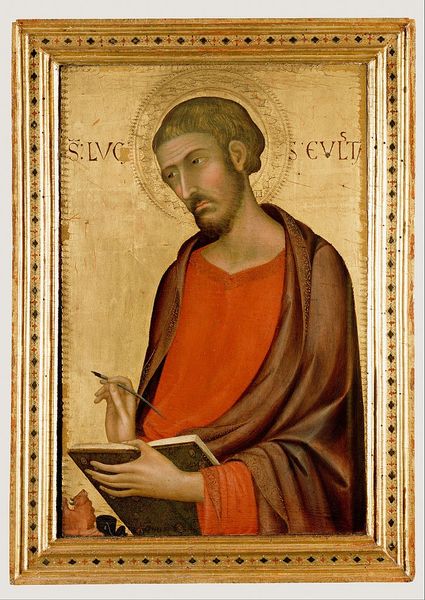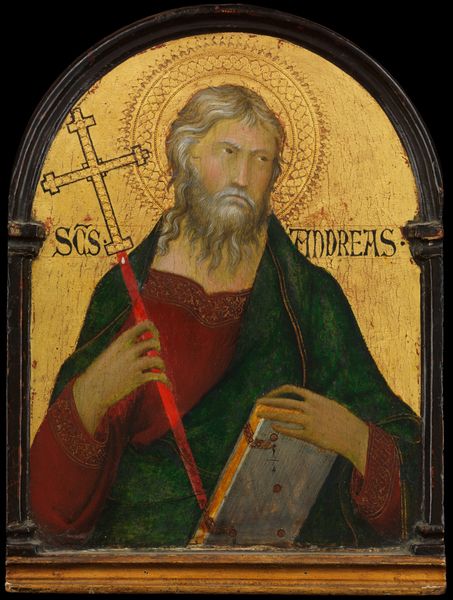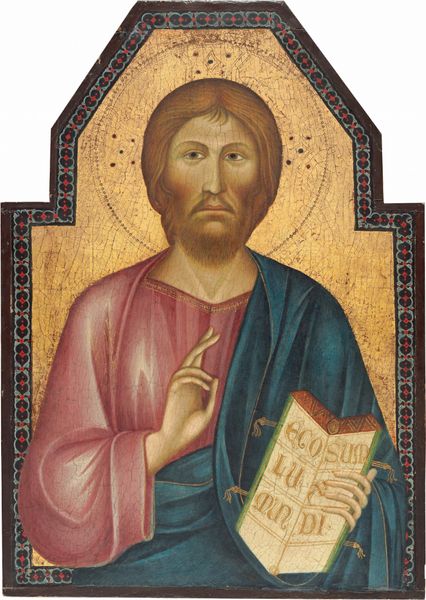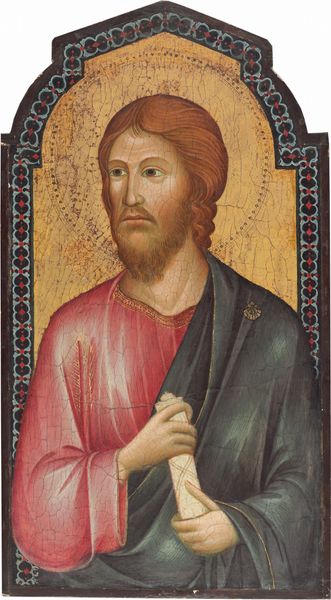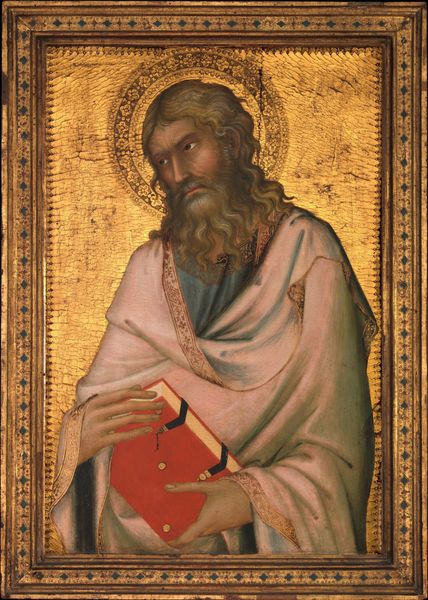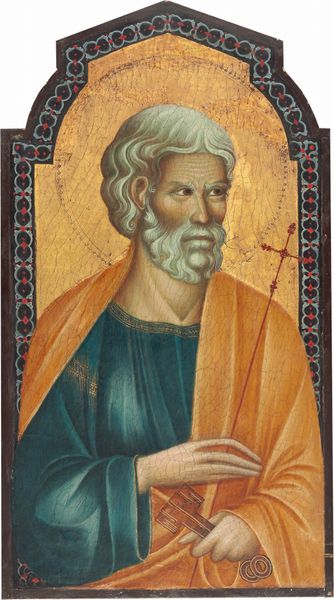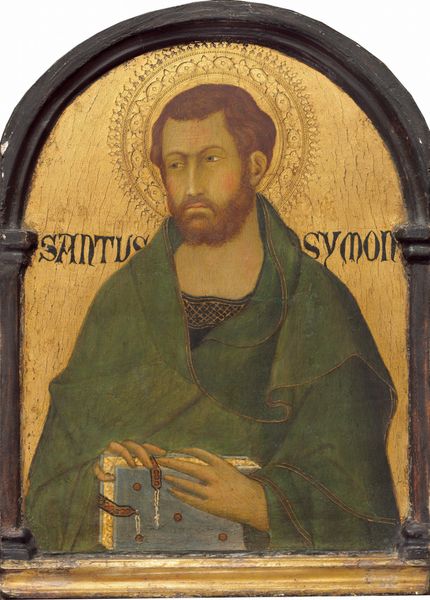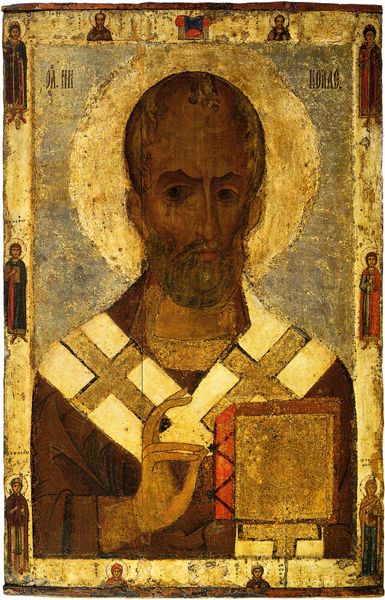
tempera, painting
#
portrait
#
medieval
#
tempera
#
painting
#
gothic
#
sienese-school
#
figuration
#
history-painting
#
international-gothic
#
italian-renaissance
#
portrait art
Dimensions: painted surface: 26 x 20 cm (10 1/4 x 7 7/8 in.) overall: 30.7 x 23 cm (12 1/16 x 9 1/16 in.) framed: 44.4 x 60 cm (17 1/2 x 23 5/8 in.)
Copyright: National Gallery of Art: CC0 1.0
Editor: Here we have Simone Martini's "Saint James Major," a tempera on panel painting dating back to about 1315-1320. The gold leaf background really strikes me. What story do you think this piece tells? Curator: Well, consider its original context. Images like this weren’t just decoration. They served a very specific purpose within the Church and larger society. The use of tempera and gold leaf isn’t merely aesthetic; it's designed to communicate wealth, power, and divinity to a largely illiterate audience. It visually reinforced the Church's authority and role. Editor: So the choice of materials itself carries a social message? I hadn't thought of that. Curator: Absolutely. And the figure himself, Saint James, holds attributes. Notice the pilgrim's staff, signifying his patronage of pilgrims, specifically those traveling to Santiago de Compostela. What does that suggest about its intended audience or location? Editor: Maybe it was commissioned for a church or chapel along the pilgrimage route, somewhere visible to those seeking spiritual guidance? Curator: Precisely. Also, consider how the emerging Italian Renaissance artists were redefining the role of individuals, but within very strong structures. Martini situates St James both in a sacred light and very physically in front of us. The political use of imagery during that era was pretty specific. How do you think displaying imagery of pilgrimage bolstered social order? Editor: That’s interesting, placing importance and offering blessing to traveling. The work really feels grounded in a specific moment and place now. It makes you appreciate the way these devotional images operated in the medieval world, reinforcing faith and social structure. Curator: Indeed. It serves as a good reminder of the intricate dance between art, religion, and power.
Comments
No comments
Be the first to comment and join the conversation on the ultimate creative platform.
